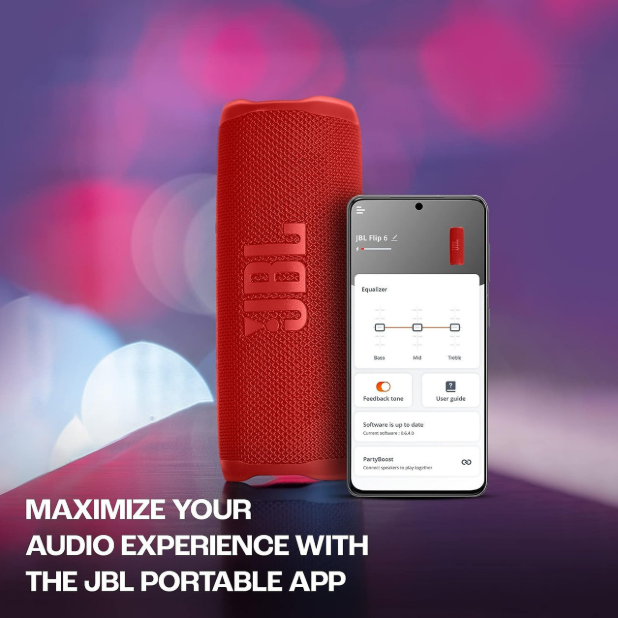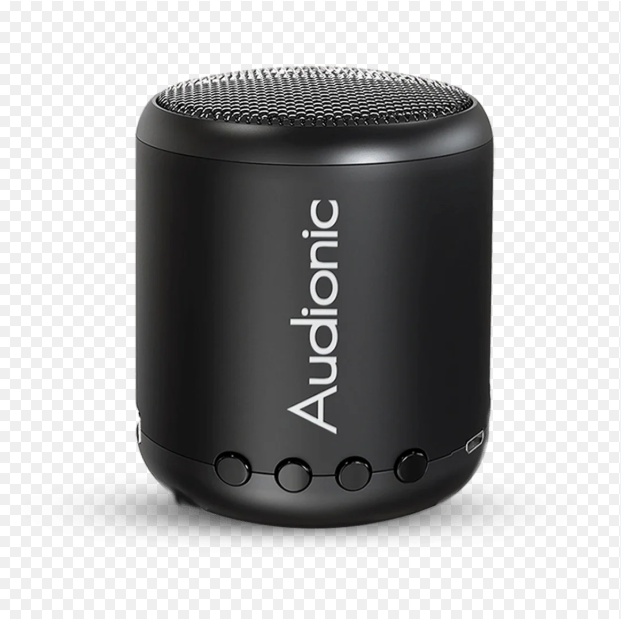When your Bluetooth speaker stops working, it can be frustrating, especially when you’re eager to enjoy music, podcasts, or a party playlist. Fortunately, most issues with portable Bluetooth speakers can be resolved with simple troubleshooting steps. In this detailed guide, we’ll explore Bluetooth speaker troubleshooting to fix common problems like no sound, connectivity issues, or power failures. We’ll also cover Bluetooth speaker setup, maintenance, cleaning, and safety tips to prevent future issues and keep your speaker in top condition. Whether you own a JBL, Anker Soundcore, or Ultimate Ears model, this best Bluetooth speaker guide will help you get back to enjoying your audio. For more audio insights, visit our Bluetooth speaker guide.
Why Is Your Bluetooth Speaker Not Working?
A Bluetooth speaker may stop working due to connectivity issues, battery problems, hardware malfunctions, or software glitches. Common culprits include improper pairing, low battery, physical obstructions, or outdated firmware. Understanding how to fix a Bluetooth speaker not working involves systematically diagnosing and addressing these issues. Before diving into repairs, ensure you have the speaker’s manual for model-specific instructions, as steps can vary for brands like JBL, Bose, or Sony. Let’s explore the most effective Bluetooth speaker troubleshooting steps to resolve the problem.
Step-by-Step Guide: How to Fix a Bluetooth Speaker Not Working
Follow these Bluetooth speaker troubleshooting steps to diagnose and fix your speaker, starting with the most common issues.
1. Check the Power and Battery
A dead or low battery is a frequent reason a Bluetooth speaker stops working. Here’s how to address it:
- Confirm Power Status: Press the power button. If there’s no response (no LED light or tone), the battery may be drained. For example, JBL speakers like the Flip 7 show a red LED when low, while Anker Soundcore models flash a warning light.
- Charge the Speaker: Connect the speaker to a power source using the provided USB-C or Micro-USB cable (e.g., Soundcore 3 uses USB-C, older models may use Micro-USB). Charge for 2–4 hours, as most speakers, like the Ultimate Ears WONDERBOOM 4, require this for a full charge.
- Check the Charger: Use the manufacturer’s cable and a reliable power source. Test with another compatible cable or outlet if it doesn’t charge. Avoid third-party chargers to prevent damage.
- Inspect the Charging Port: Look for debris or damage in the USB port. Clean gently with compressed air or a small brush. If the port is damaged, contact the manufacturer for repair options.
- Battery Health: If the speaker powers on but dies quickly, the battery may be degraded. Charge every 2–3 months when unused to maintain health, as recommended for models like the Bose SoundLink Max.
2. Verify Bluetooth Connectivity
Connectivity issues are a common cause of a Bluetooth speaker not working. Here’s how to fix pairing problems:
- Ensure Pairing Mode: Press the Bluetooth button (often marked with an icon) to enter pairing mode, indicated by a flashing LED (e.g., blue on JBL Charge 6) or a tone (e.g., Sony ULT Field 7). Some speakers, like the Harman Kardon Luna, enter pairing mode automatically on first use.
- Check Device Bluetooth: On your phone, tablet, or laptop, go to Settings > Bluetooth and ensure it’s enabled. For iPhones, this is under Settings; for Android, it’s in Connections or Bluetooth.
- Forget and Re-Pair: If the speaker appears but won’t connect, go to your device’s Bluetooth settings, select the speaker (e.g., “UE EVERBOOM”), and choose “Forget” or “Unpair.” Then, re-pair by selecting the speaker again from the available devices list.
- Minimize Interference: Keep the speaker within 33–150 feet of your device (depending on Bluetooth 5.0/5.3 range). Avoid interference from Wi-Fi routers, microwaves, or other Bluetooth devices. For example, the JBL Boombox 3 has a 100-foot range but can drop if obstructed.
- Reset the Speaker: Reset to factory settings by holding the power and Bluetooth buttons (or a dedicated reset button) for 5–20 seconds, per the manual. For instance, the Ultimate Ears HYPERBOOM requires holding power and volume-down for 10 seconds.
3. Troubleshoot No Sound Issues
If your Bluetooth speaker is powered on and paired but produces no sound, try these steps:
- Check Volume Levels: Ensure the volume is turned up on both the speaker and your device. Some speakers, like the Anker Soundcore Boom 2, have separate volume controls that may be muted.
- Verify Audio Output: On your device, confirm the speaker is selected as the audio output. For example, on iPhones, check the AirPlay or Bluetooth output in the Control Center; on Android, check Bluetooth settings.
- Test with Another Device: Connect the speaker to a different phone or laptop to rule out device-specific issues. If it works, the problem lies with your original device’s settings.
- Inspect the Grille: Debris or damage to the speaker grille can muffle sound. Gently clean with a soft brush or rinse IPX7/IP67-rated speakers like the JBL Flip 7 under water.
- Update Firmware: Use the manufacturer’s app (e.g., JBL Portable, Soundcore app, UE | BOOM) to check for firmware updates, as outdated firmware can cause audio issues. For example, the UE WONDERBOOM 4 has reported cutouts fixed by updates.
4. Address Sound Distortion or Poor Quality
If your Bluetooth speaker produces distorted or low-quality sound, consider these fixes:
- Lower the Volume: Smaller speakers, like the Soundcore Mini, may distort at max volume. Reduce the volume to 70–80% to improve clarity.
- Adjust EQ Settings: Use the companion app to balance bass, mids, and treble. For instance, the Soundcore app offers a nine-band EQ for the Boom 2 Plus, while the JBL Portable app adjusts settings for the Charge 6. Overemphasized bass can cause distortion in models like the Sony ULT Field 7.
- Check Placement: Ensure the speaker is on a stable, flat surface to avoid vibrations. Avoid corners or walls, which can amplify bass and cause distortion, especially for bass-heavy models like the JBL Boombox 3.
- Test Audio Source: Poor-quality audio files or low-bitrate streams (e.g., 128kbps MP3s) can degrade sound. Try high-quality sources like Spotify Premium or Apple Music.

5. Fix Intermittent or Dropping Connections
If the connection drops frequently, try these Bluetooth speaker troubleshooting steps:
- Reduce Distance: Move the speaker closer to your device to stay within the Bluetooth range (33–150 feet). Walls or obstacles can weaken the signal, especially for older Bluetooth 4.2 models like the Harman Kardon Aura Studio 4.
- Eliminate Interference: Turn off nearby Wi-Fi routers, microwaves, or other Bluetooth devices to reduce signal interference.
- Update Device Bluetooth: Ensure your phone’s operating system is up to date (e.g., iOS 18 or Android 15 in 2025) to avoid compatibility issues.
- Re-Pair Devices: Forget the speaker in your device’s Bluetooth settings and re-pair to establish a fresh connection.
6. Check for Hardware Issues
If the above steps don’t resolve the issue, consider hardware problems:
- Inspect for Damage: Check for physical damage, such as dents, cracked grilles, or loose components. Dropped speakers, like the UE EVERBOOM, may have internal damage affecting performance.
- Test Buttons and Ports: Ensure buttons (power, Bluetooth, volume) are responsive. Clean ports with compressed air to remove debris that might prevent charging or aux input functionality.
- Contact Support: If hardware issues persist, contact the manufacturer’s support team. Brands like JBL, Bose, and Anker offer warranties (typically 1–2 years) for repairs or replacements.
Bluetooth Speaker Cleaning and Maintenance Tips
Proper Bluetooth speaker cleaning and maintenance can prevent issues and extend your speaker’s lifespan. Follow these Bluetooth speaker tips:
- Clean the Exterior: Wipe with a soft, dry cloth. For dirt, sand, or spills, use a damp cloth with mild soap, avoiding harsh chemicals that could damage rubber or fabric finishes (e.g., UE WONDERBOOM 4).
- Clear the Grille: Remove debris with a soft brush. For IPX7/IP67-rated speakers like the JBL Charge 6, rinse under fresh water after beach or pool use and dry thoroughly.
- Protect from Elements: Store in a case when not in use to shield from dust, sand, or UV exposure, especially for non-dustproof models like the Soundcore Boom 2 Plus.
- Battery Care: Charge every 2–3 months if unused to prevent battery degradation. Avoid overcharging by unplugging once fully charged.
- Check Ports: Keep USB-C, Micro-USB, or aux ports clean using compressed air or a small brush to remove debris.
For more maintenance tips, visit our guide at bluetoothspeakerusa.com.
Bluetooth Speaker Safety Tips
To prevent issues and protect your portable Bluetooth speaker, follow these Bluetooth speaker safety tips:
- Check IP Rating: Verify the IP rating (e.g., IP67 for Anker Soundcore Boom 2, IPX4 for JBL PartyBox Stage 320) to ensure suitability for your environment. Avoid submerging splashproof models or exposing non-dustproof speakers to sand.
- Avoid Overheating: Keep the speaker away from direct sunlight or heat sources to prevent damage to internal components.
- Use Proper Charging: Use the manufacturer’s charger or cable to avoid battery or circuit damage.
- Secure Placement: Place on stable surfaces to prevent falls, especially for heavier models like the Sony ULT Field 7.

Preventing Future Bluetooth Speaker Issues
To avoid needing to fix a Bluetooth speaker not working, incorporate these habits:
- Regular Firmware Updates: Check for updates via the manufacturer’s app (e.g., JBL Portable, Soundcore app) to improve performance and fix bugs.
- Proper Storage: Store in a cool, dry place when not in use to protect from humidity or extreme temperatures.
- Avoid Overuse at Max Volume: Playing at maximum volume strains drivers and drains the battery faster, reducing lifespan.
- Use Protective Cases: Invest in a case for rugged models like the UE EVERBOOM to prevent damage during travel.
Conclusion: Get Your Bluetooth Speaker Working Again
Fixing a Bluetooth speaker not working is often a matter of simple Bluetooth speaker troubleshooting, from checking the battery to resetting connections. By following our step-by-step guide, you can resolve common issues like no sound, connectivity drops, or power failures for any portable Bluetooth speaker. Combine these fixes with proper Bluetooth speaker setup, cleaning, and maintenance to keep your speaker performing at its best. Whether you’re using a JBL Flip 7, Anker Soundcore Boom 2, or Bose SoundLink Max, our tips will help you enjoy uninterrupted audio. For more advice and reviews, explore our best Bluetooth speaker guide at bluetoothspeakerusa.com.